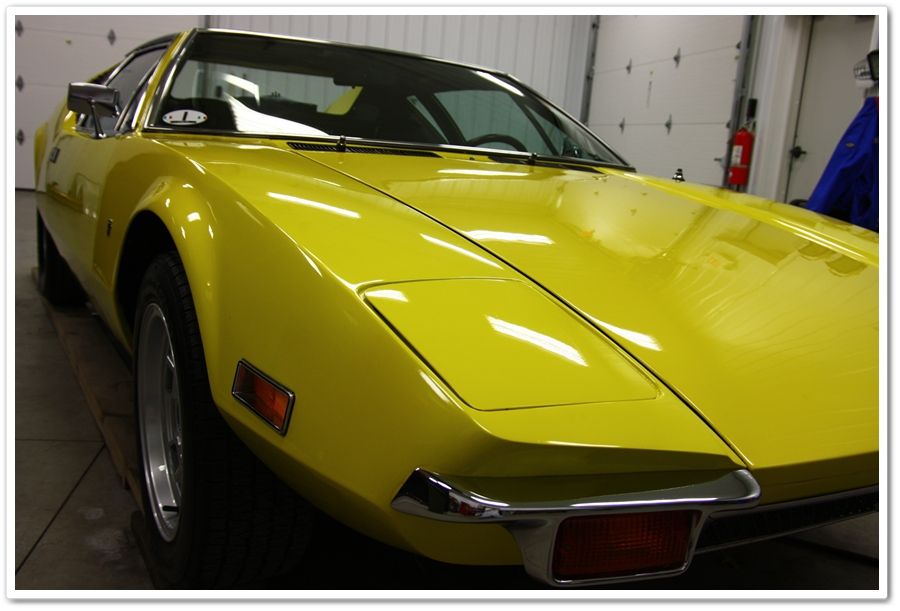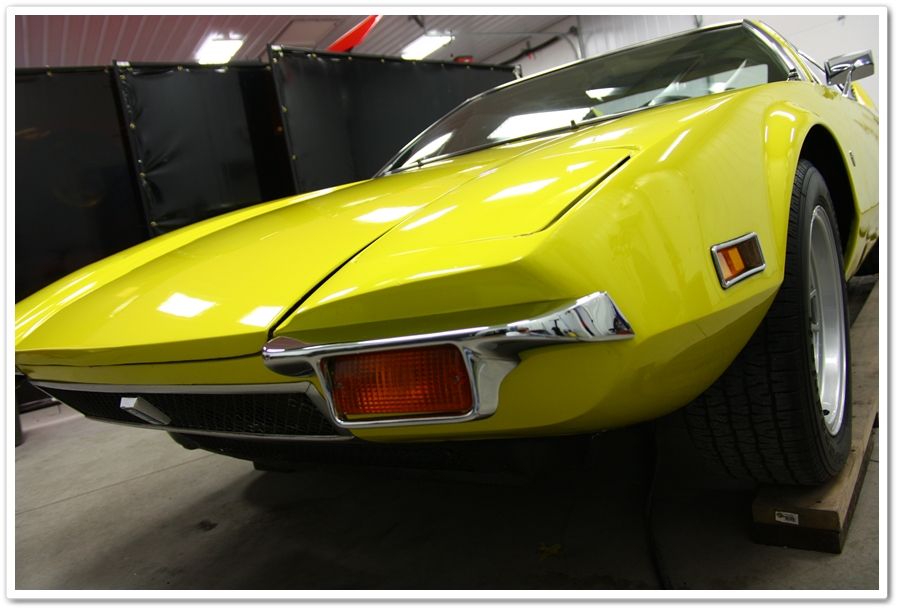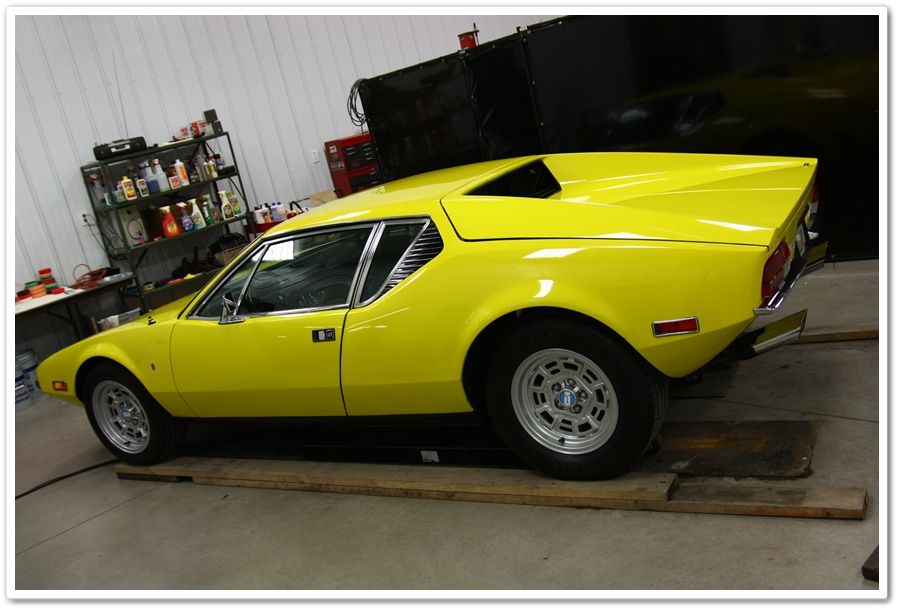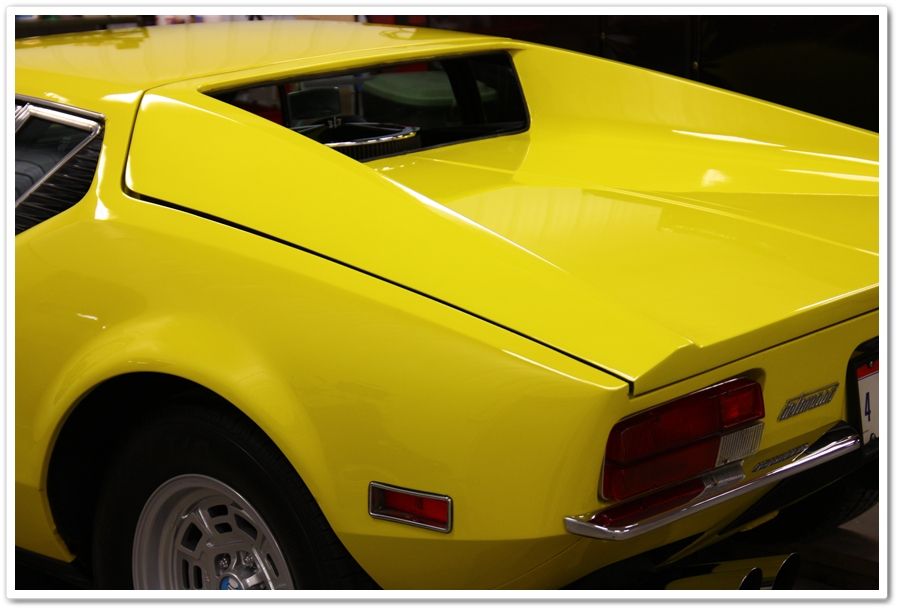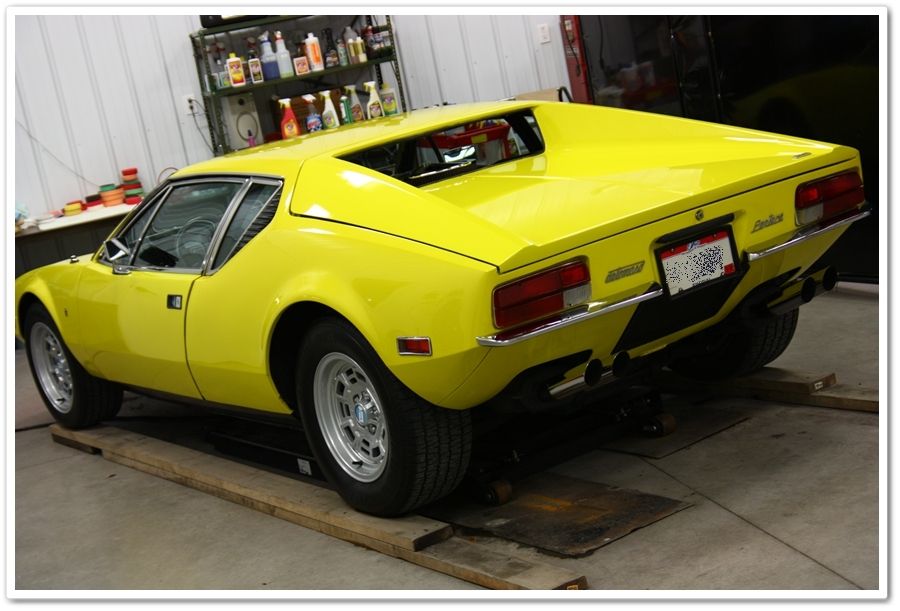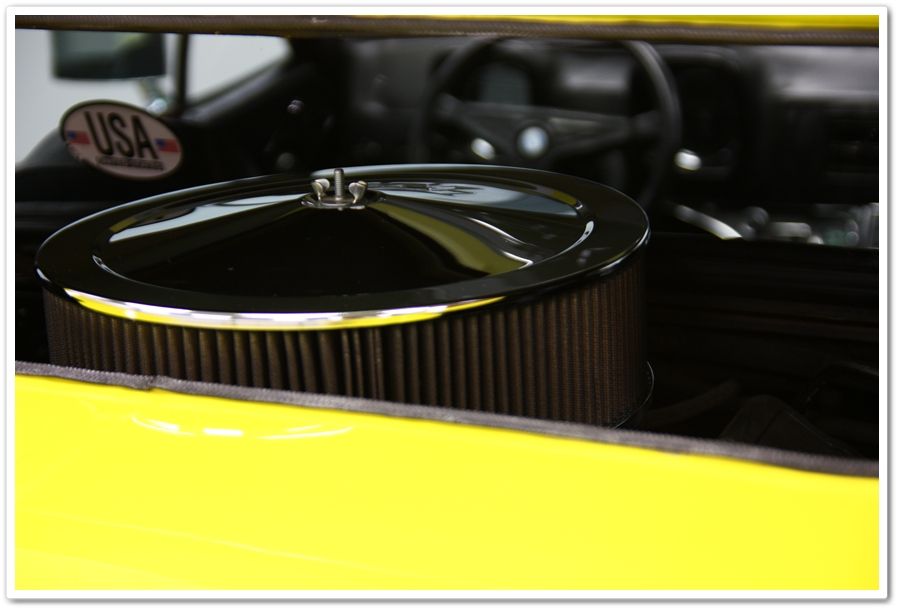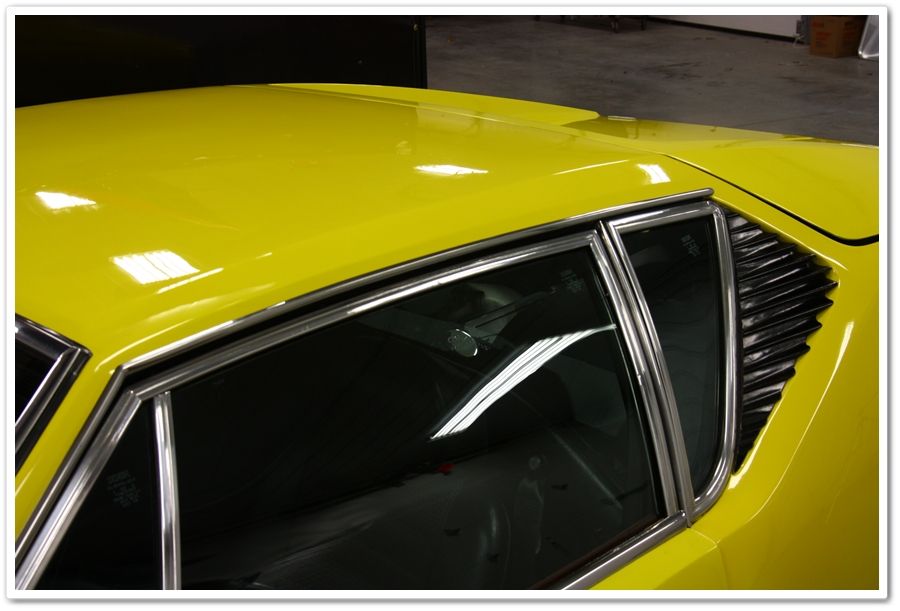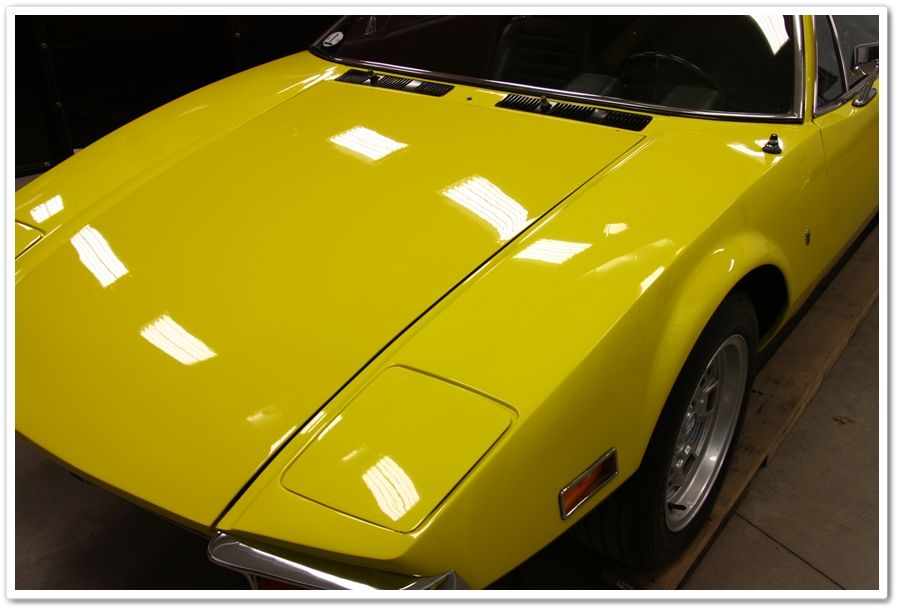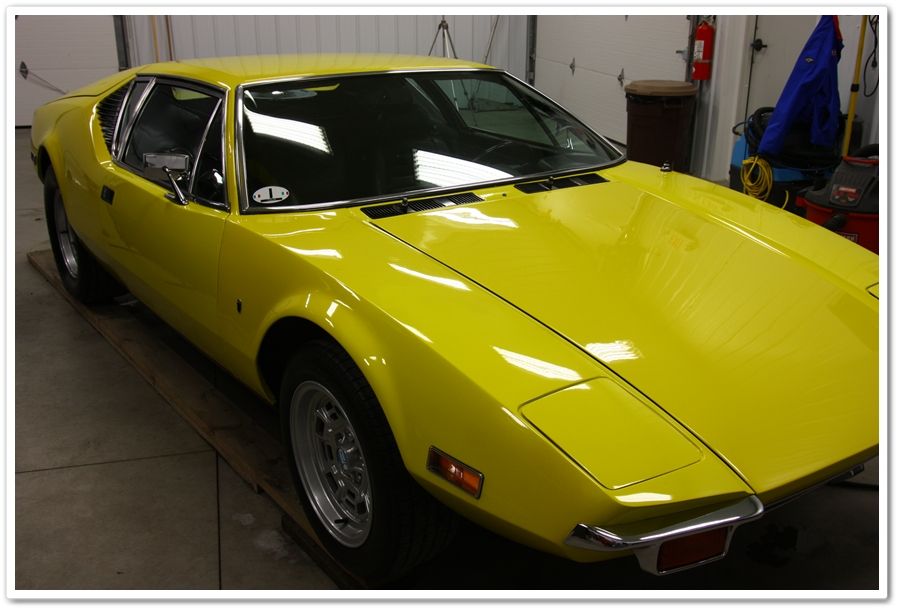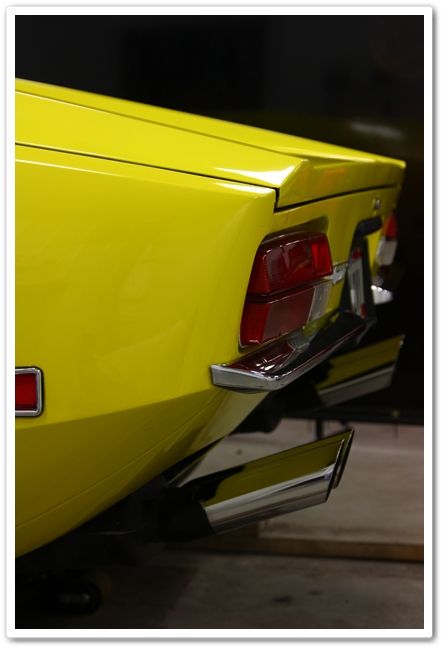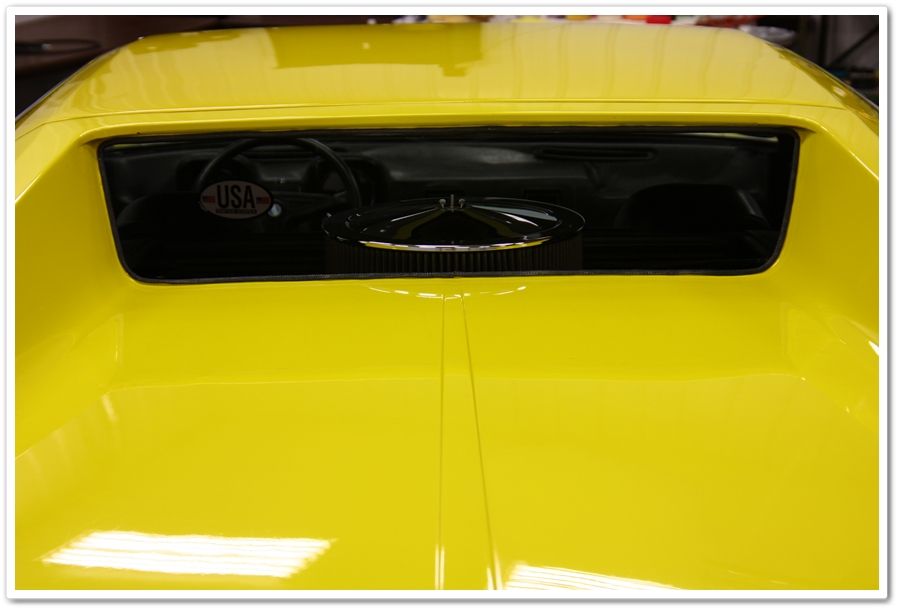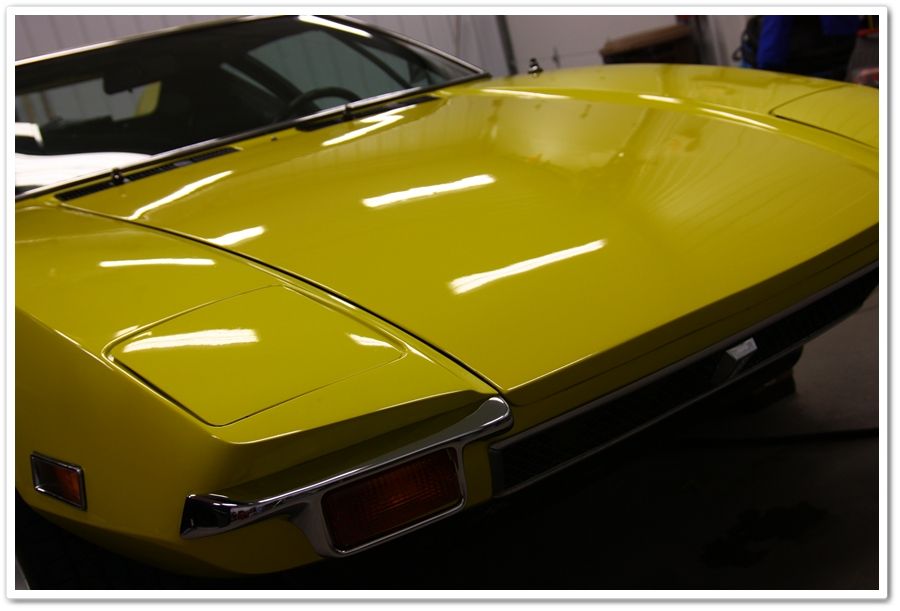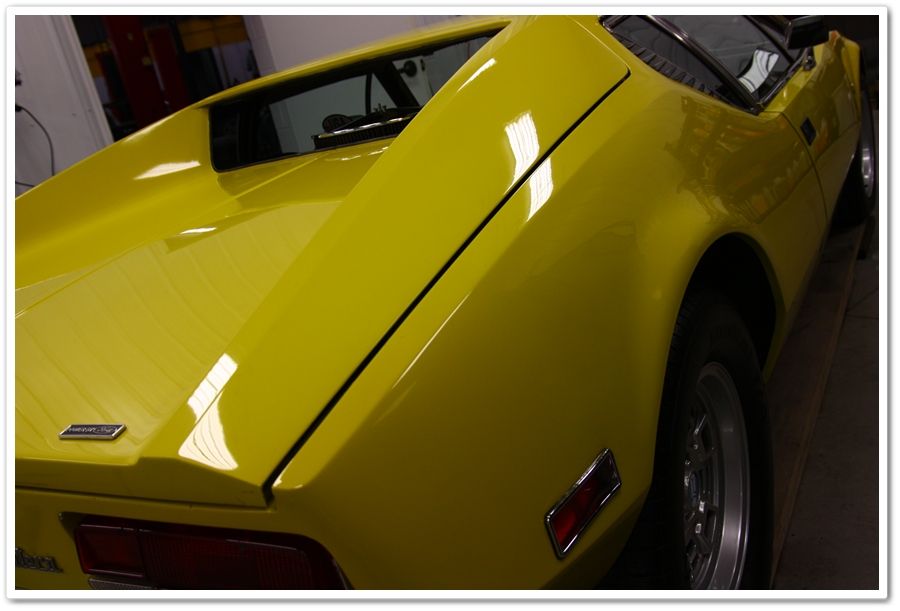1972 De Tomaso Pantera
For those of you unfamiliar with the Pantera…yes, it is a bit of a strange car! It came from a short lived marriage between De Tomaso of Italy, and the Ford Motor Company. These cars were imported into the United States and sold through Ford/Lincoln/Mercury dealers for a few years.
1971 was the first year of the Pantera, and at the heart of the Italian car was pure American muscle…the Ford 351 Cleveland engine that produced 330 horsepower. As with the rest of the muscle cars of that era however, those horsepower figures quickly dropped off in the following years.
Unfortunately the De Tomaso vehicles weren’t known for build quality or a high level of fit and finish, which is one of the reasons why Ford decided to cease importation after a few years. On this particular car it was hard to tell what paint was original and what was re-sprayed, but as with most Italian cars of that era you could tell that the finish was rough, and a far cry from modern paint finishes.
This was not a defect correction job, but rather a simple cleanup to preserve the finish and to add some gloss. The Pantera appeared to have multiple re-paints throughout its life, as I found the thicknesses to vary greatly from panel to panel, and there were 2-3 different shades of yellow. While the overall thickness was good, the edges and seams were very thin with many of them burned through. Especially on old cars like this you need to be extremely careful when polishing to preserve as much of the paint as possible.
After an ONR wash and spot-claying, I worked a few areas with Menzerna 106FA/white/rotary to address some light hazing, and then polished the entire car with Optimum Poliseal/white/PCXP to clean the paint and add a nice gloss. Afterwards I applied a coat of Optimum Opti-Seal, and then buffed off the residue with Optimum Spray Wax.
Even just a quick polish made a big difference in the overall look of the vehicle, and the Optimum combination provided a beautiful gloss as always. Now the Pantera will get tucked away for the winter, and brought out next summer for yet another year of fun driving.
Cleaning up some slight hazing with Menzerna 106FA
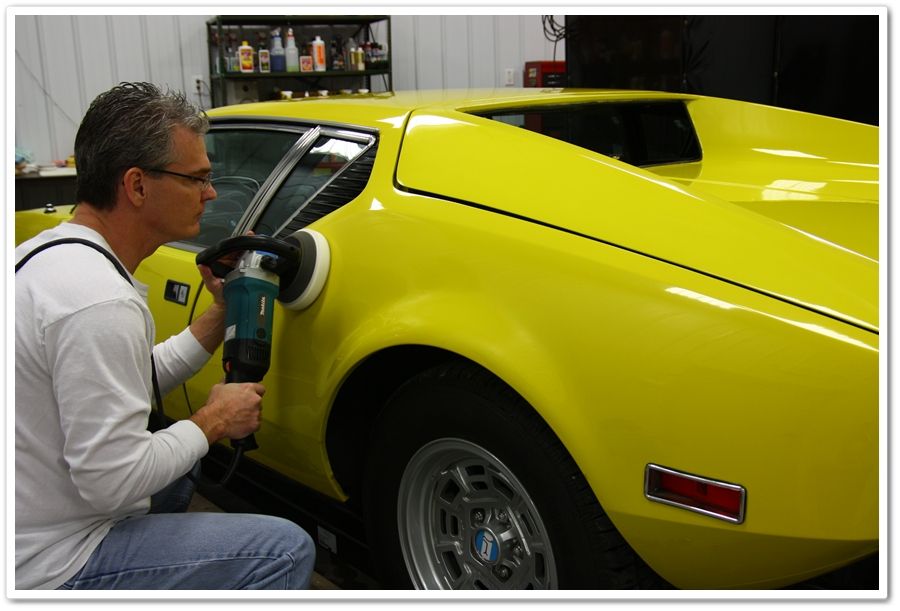
Signs of overly aggressive polishing and/or bad paint work during its life
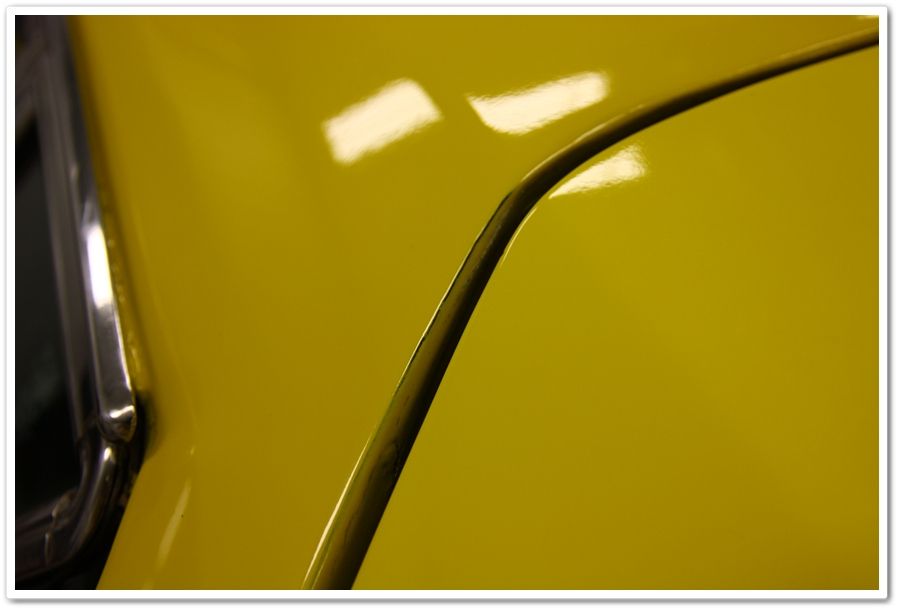
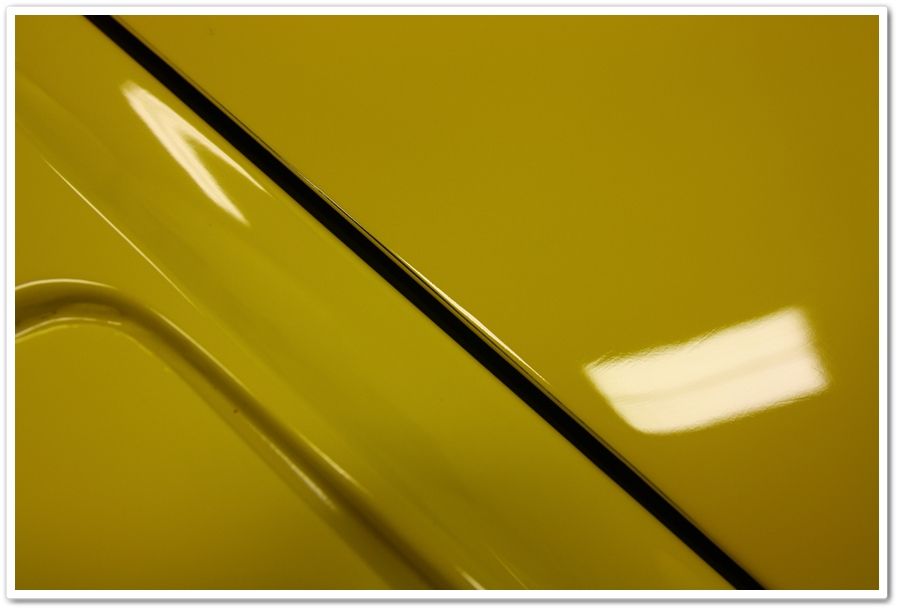
After letting the Opti-Seal cure for about 30 minutes, I’ll buff out the finish using Optimum Spray Wax. This is a very nice looking combination with good durability, and extremely easy to use.

For the interior, I just did a quick wipedown with Megs Quik Interior Detailer but I figured that you’d want to see what it looked like.
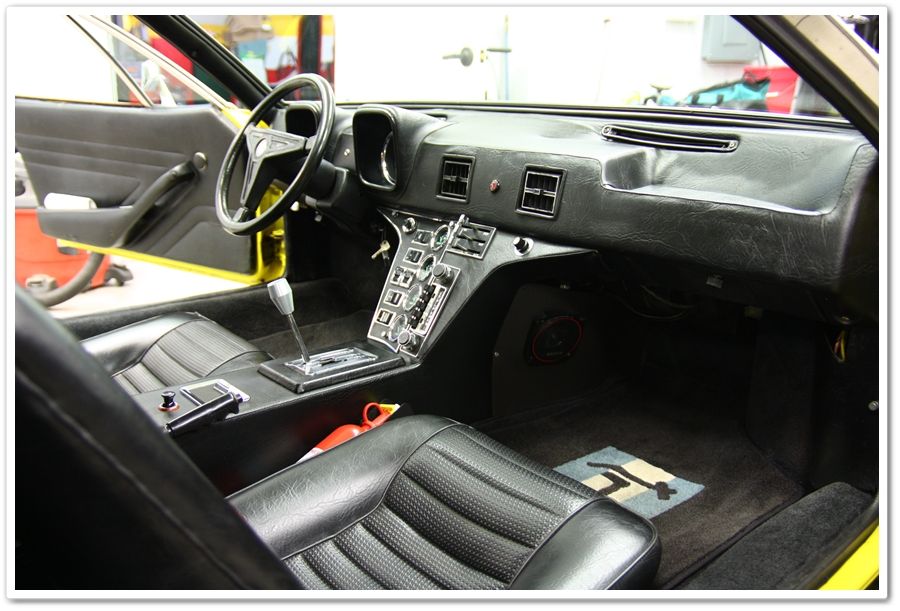

Here you can see that you only have a small piece of glass and a few inches separating the driver from the intake on the 351 Cleveland! These cars sound mean…especially when you’re seated this close.

And now for a variety of after-shots
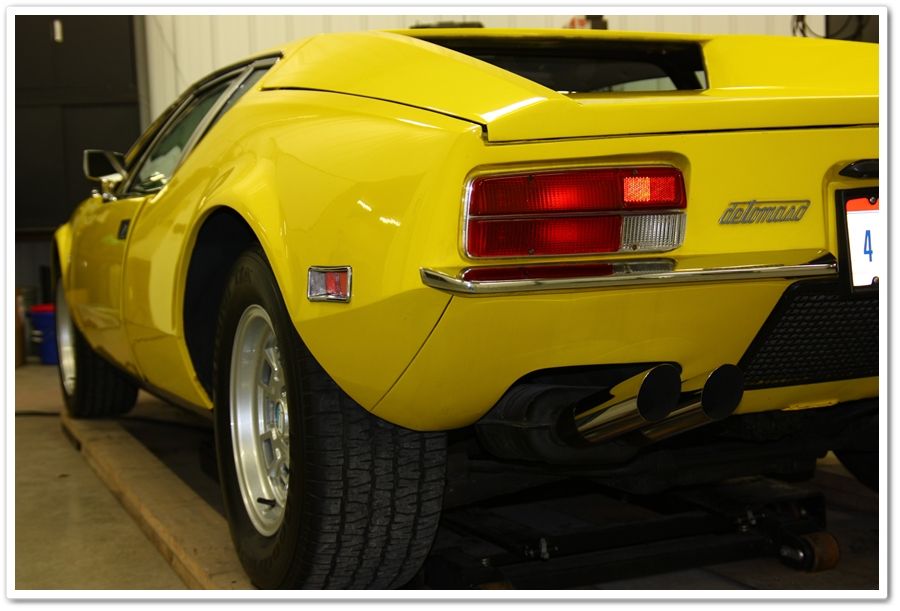

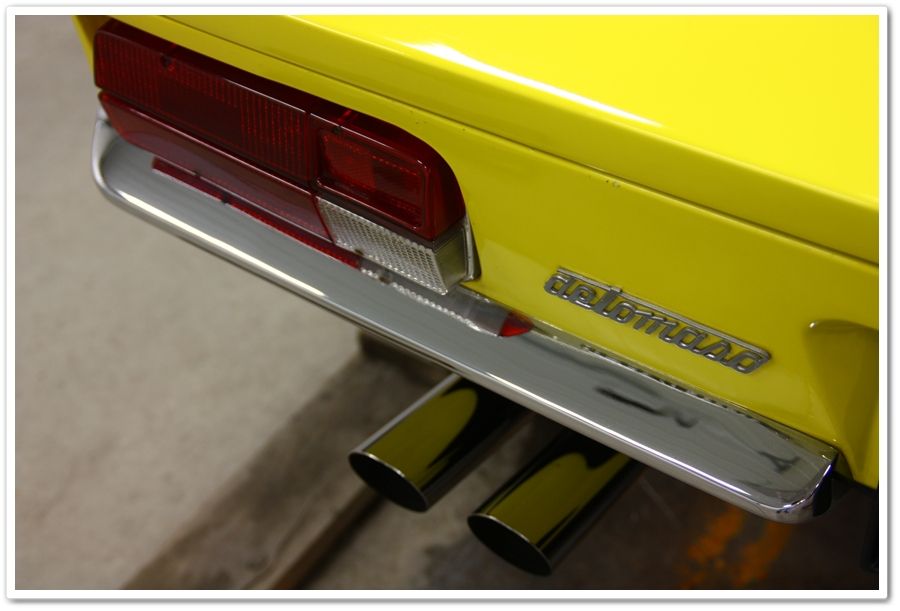
For those of you unfamiliar with the Pantera…yes, it is a bit of a strange car! It came from a short lived marriage between De Tomaso of Italy, and the Ford Motor Company. These cars were imported into the United States and sold through Ford/Lincoln/Mercury dealers for a few years.
1971 was the first year of the Pantera, and at the heart of the Italian car was pure American muscle…the Ford 351 Cleveland engine that produced 330 horsepower. As with the rest of the muscle cars of that era however, those horsepower figures quickly dropped off in the following years.
Unfortunately the De Tomaso vehicles weren’t known for build quality or a high level of fit and finish, which is one of the reasons why Ford decided to cease importation after a few years. On this particular car it was hard to tell what paint was original and what was re-sprayed, but as with most Italian cars of that era you could tell that the finish was rough, and a far cry from modern paint finishes.
This was not a defect correction job, but rather a simple cleanup to preserve the finish and to add some gloss. The Pantera appeared to have multiple re-paints throughout its life, as I found the thicknesses to vary greatly from panel to panel, and there were 2-3 different shades of yellow. While the overall thickness was good, the edges and seams were very thin with many of them burned through. Especially on old cars like this you need to be extremely careful when polishing to preserve as much of the paint as possible.
After an ONR wash and spot-claying, I worked a few areas with Menzerna 106FA/white/rotary to address some light hazing, and then polished the entire car with Optimum Poliseal/white/PCXP to clean the paint and add a nice gloss. Afterwards I applied a coat of Optimum Opti-Seal, and then buffed off the residue with Optimum Spray Wax.
Even just a quick polish made a big difference in the overall look of the vehicle, and the Optimum combination provided a beautiful gloss as always. Now the Pantera will get tucked away for the winter, and brought out next summer for yet another year of fun driving.
Cleaning up some slight hazing with Menzerna 106FA

Signs of overly aggressive polishing and/or bad paint work during its life


After letting the Opti-Seal cure for about 30 minutes, I’ll buff out the finish using Optimum Spray Wax. This is a very nice looking combination with good durability, and extremely easy to use.

For the interior, I just did a quick wipedown with Megs Quik Interior Detailer but I figured that you’d want to see what it looked like.


Here you can see that you only have a small piece of glass and a few inches separating the driver from the intake on the 351 Cleveland! These cars sound mean…especially when you’re seated this close.

And now for a variety of after-shots




